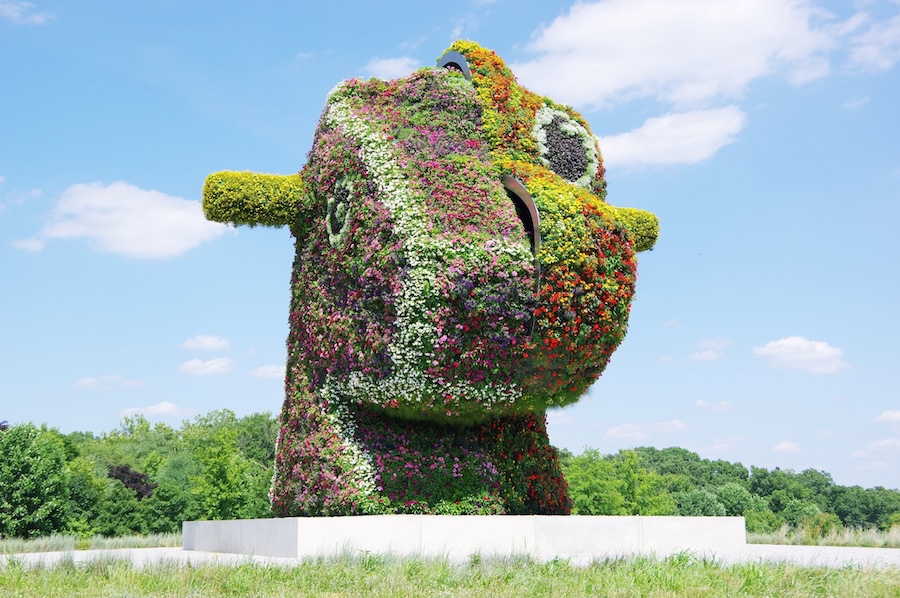
Split-Rocker © Jeff Koons, courtesy of the Glenstone Museum
A trip to Glenstone feels like a journey to another world. Founded by Emily and Mitch Rales, Glenstone's 230 acres of landscape, two gallery buildings and outdoor sculptures invite visitors to slow down, reflect and connect deeply with art and nature. Free, timed-entry tickets are highly recommended, as are comfortable walking shoes – this serene museum is best explored at your own pace.

Split-Rocker © Jeff Koons, courtesy of the Glenstone Museum
Glenstone opened in 2006 with a single gallery, 9,000 square feet of exhibition space, a three-acre pond and an assortment of outdoor sculptures and trails. In 2018, the museum unveiled a dramatic expansion, the culmination of a 15-year process.
Today, Glenstone features a series of indoor and outdoor spaces that showcase post-World War II artworks that will challenge visitors to think deeply while also providing a global perspective on seminal art from the past 70 years. The collection is considered one of the best in the United States. View a map.
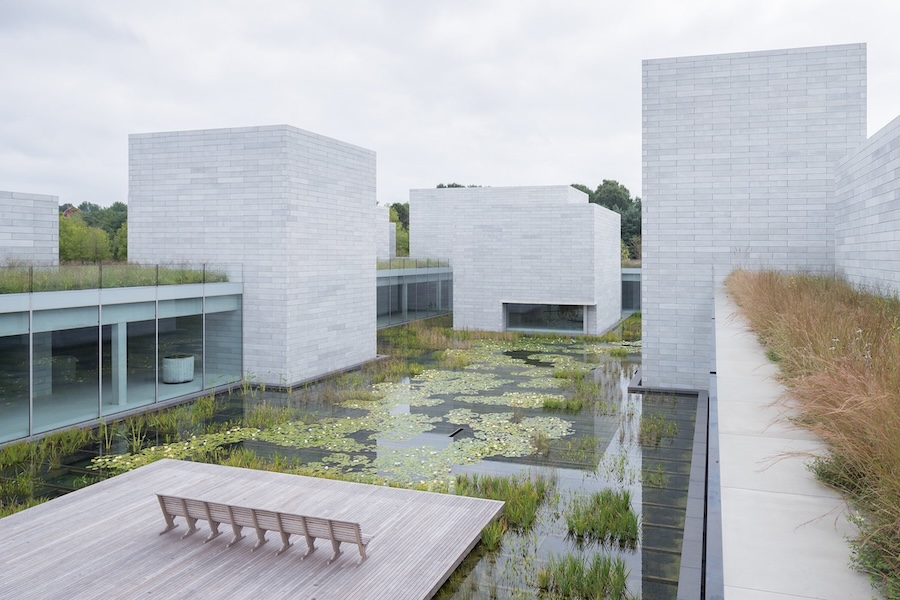
© Iwan Baan, courtesy of the Glenstone Museum
Glenstone is located at 12100 Glen Road in Potomac, Md., roughly 40 minutes from downtown DC by car. Free parking is readily available. It is also possible to arrive via a combination of Metrorail and bus, which can take up to 1.5 hours.
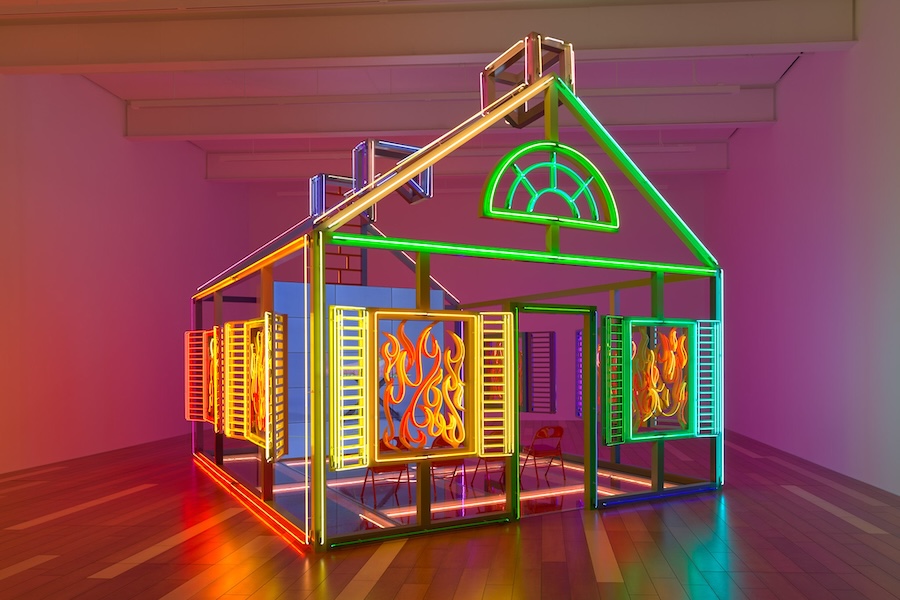
Rubber Pencil Devil (Hell House) by Alex Da Corte © Ron Amstutz, courtesy of the Glenstone Museum
Admission is always free, though timed-entry tickets are highly encouraged. The museum is open from Thursday to Sunday, 10 a.m. to 5 p.m.
While visiting, please don’t touch the art and practice Leave No Trace principles. Due to the fragility of the works on view, all visitors to Glenstone must be 12 or older and all minors (under age 17) must be accompanied by an adult at all times. Infants under one year are welcome (no ticket required), and strollers may be used outdoors. Pets are not permitted, aside from service animals.
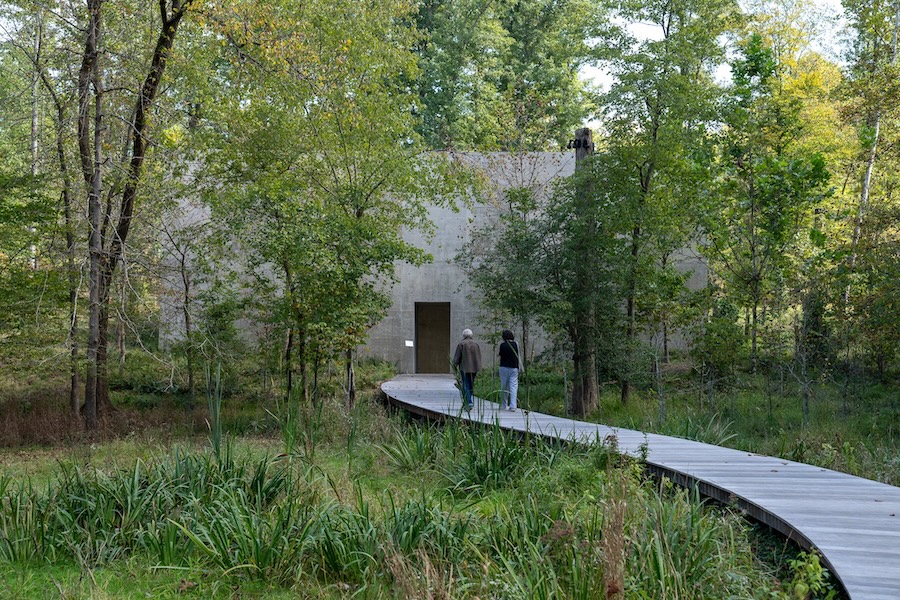
Four Rounds: Equal Weight, Unequal Measure by Richard Serra, courtesy of the Glenstone Museum
Glenstone kindly requests that its guests reserve a visit in advance online. Visits can be scheduled on the half hour from 10 a.m. to 3 p.m. Tickets are released on the first of every month for the next sixty days (for example, on Oct. 1, tickets will be available through the end of Nov.).
If you arrive without a reservation, Glenstone will work to accommodate you, but reservations are highly recommended. Glenstone offers a Guaranteed Entry program for educators and veterans.
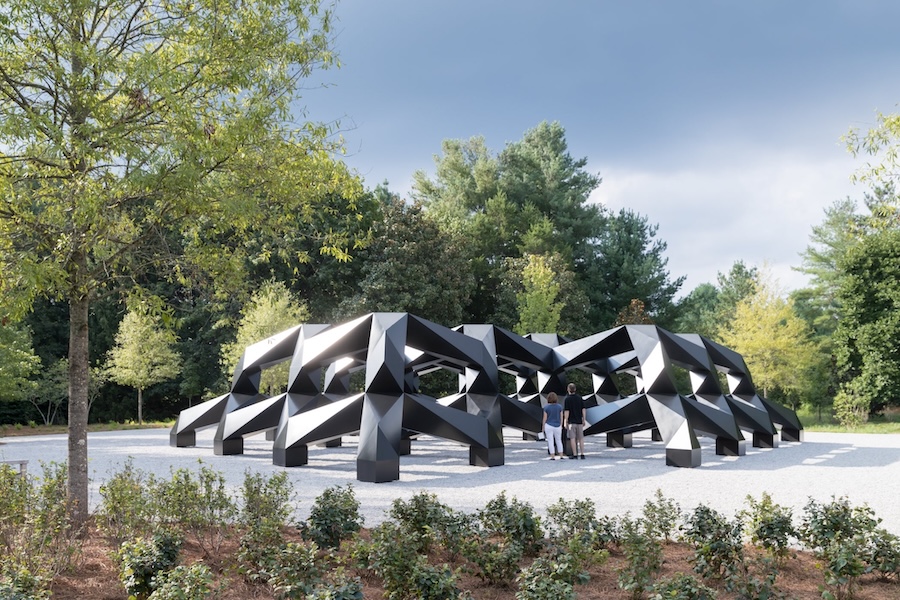
Smug by Tony Smith © Iwan Baan, courtesy of the Glenstone Museum
Glenstone's expansive grounds mean you're in for a day of serene strolling past streams, meadows, forests and of course, modern artworks.
Begin at the Arrival Hall, a modern building positioned to introduce visitors to the museum and give a first taste of its minimalist design aesthetic. It also contains the Bookstore, a gift shop with Glenstone titles, limited-edition posters and more highlighting contemporary and abstract art.
Another main attraction is the Pavilions, a futuristic, 204,000-square-foot structure that rises up from the middle of a field, made of stacked concrete and glass allowing natural light throughout. It includes:
Popular works in the outdoor sculpture collection:
Popular works inside the Pavilions:
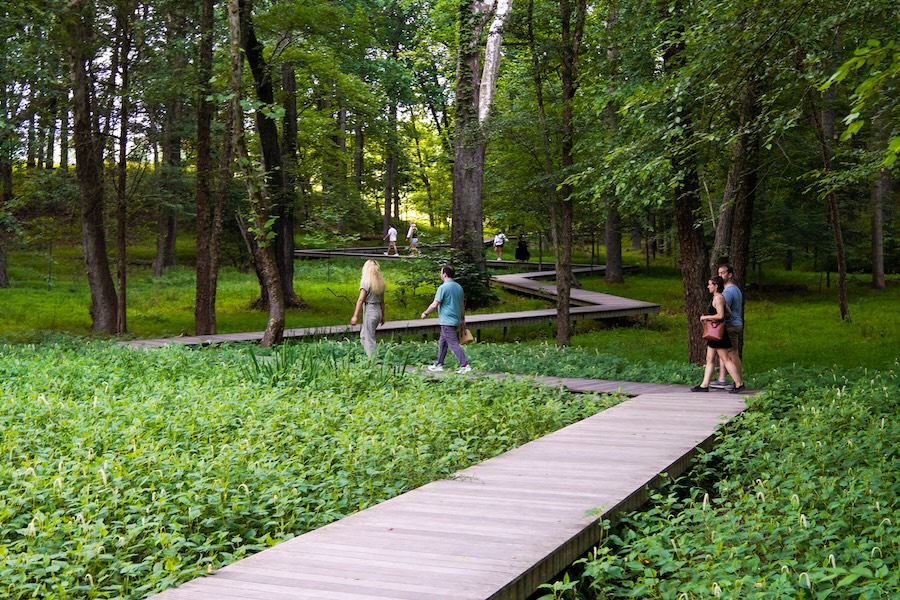
© Iwan Baan, courtesy of the Glenstone Museum
While photography is not allowed inside the museum, guests can take photos of the outdoor artworks for their Instagram and for personal use (no auxiliary lighting, selfie sticks, drones, tripods or commercial photography).
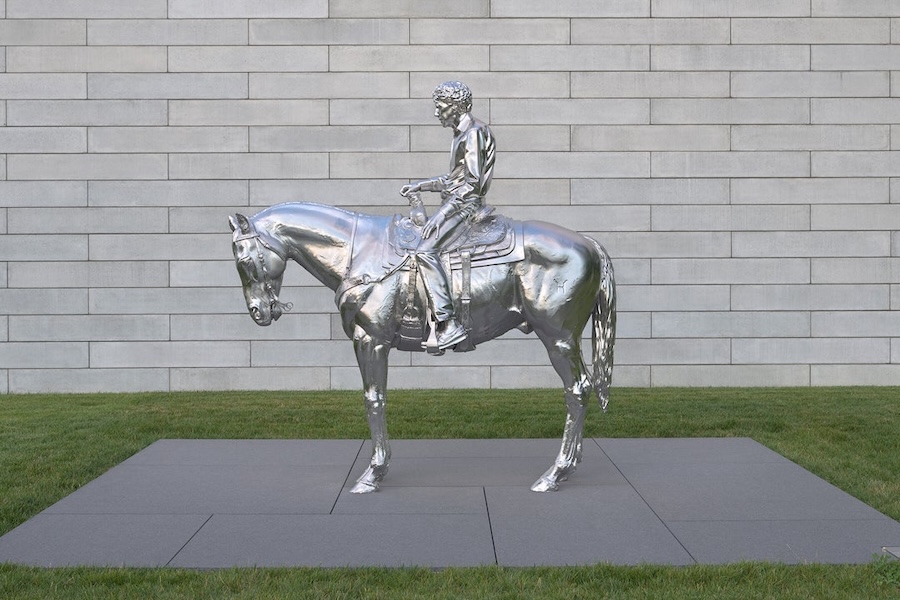
Horse and Rider by Charles Ray © Ron Amstutz, courtesy of the Glenstone Museum
The Glenstone does not offer guided tours of the indoor art spaces, but they do host daily Nature Walks led by Guides and members of our grounds maintenance team.
Guides, dressed entirely in gray, will be present throughout your visit, ready to inform and discuss your interpretations of the art that you’re seeing. Glenstone is all about allowing you to slow down and interact with the art on your own terms.
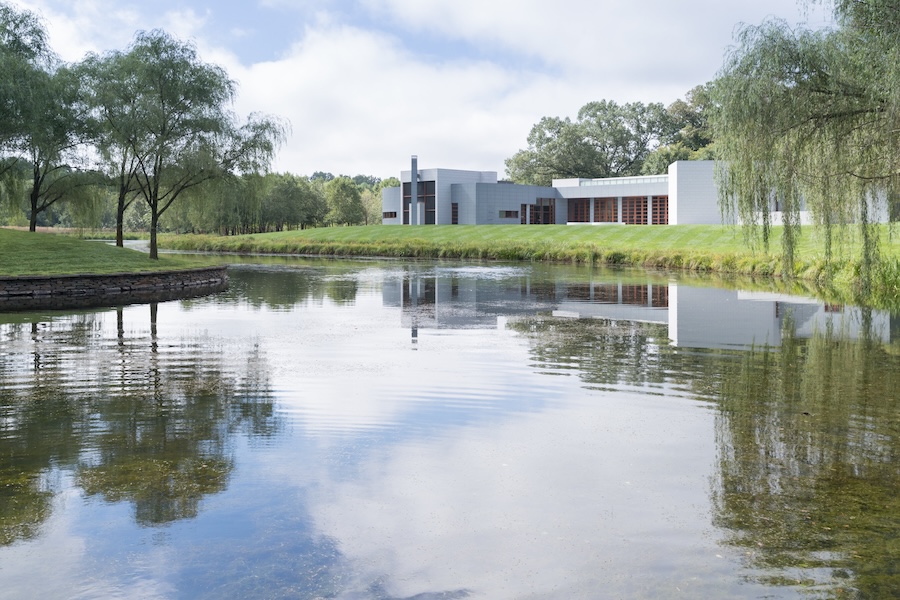
© Iwan Baan, courtesy of the Glenstone Museum
Of course! Wanderers can break up their day of exploring with a stop at the serene cafe, set into the forest in a perfectly Glenstone way.
Next, engage with more free arts and culture in the District.